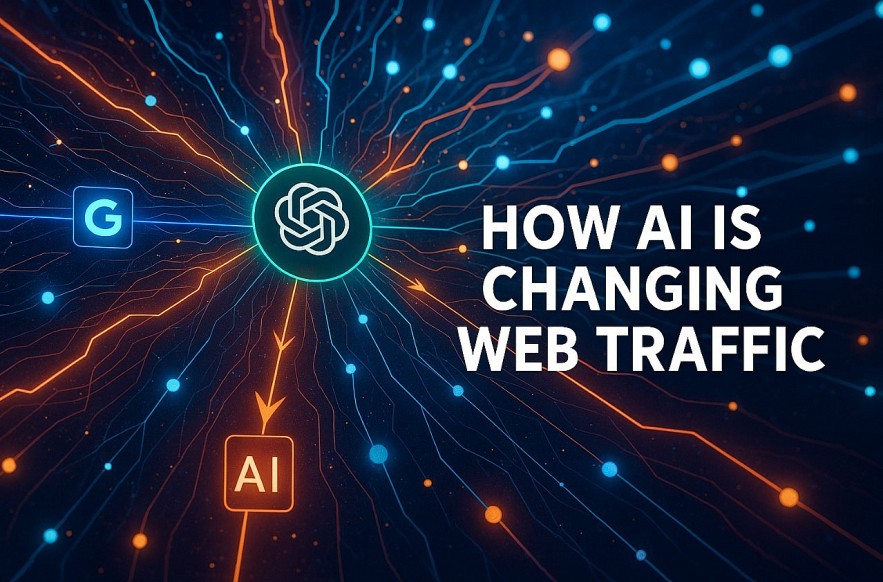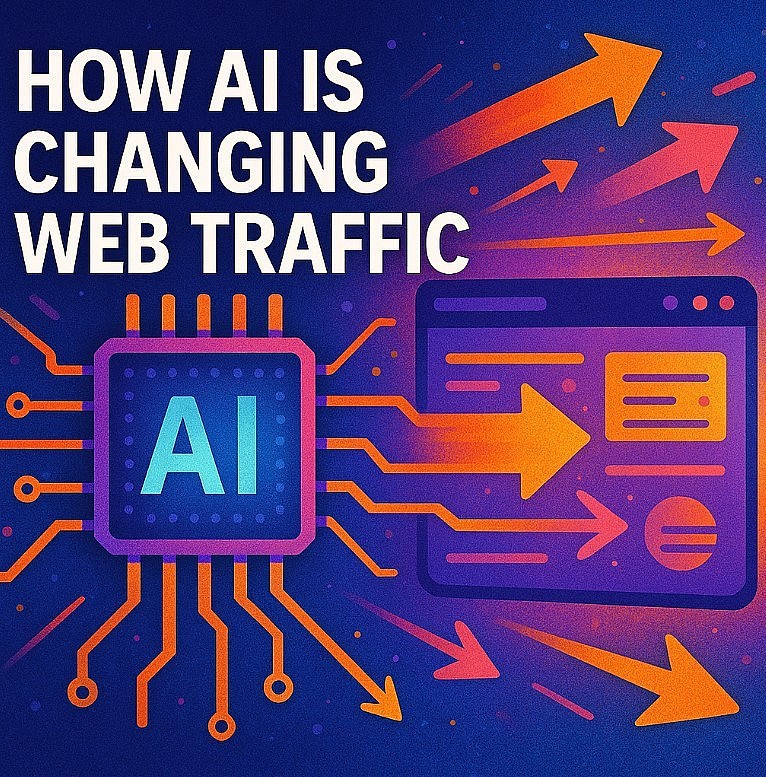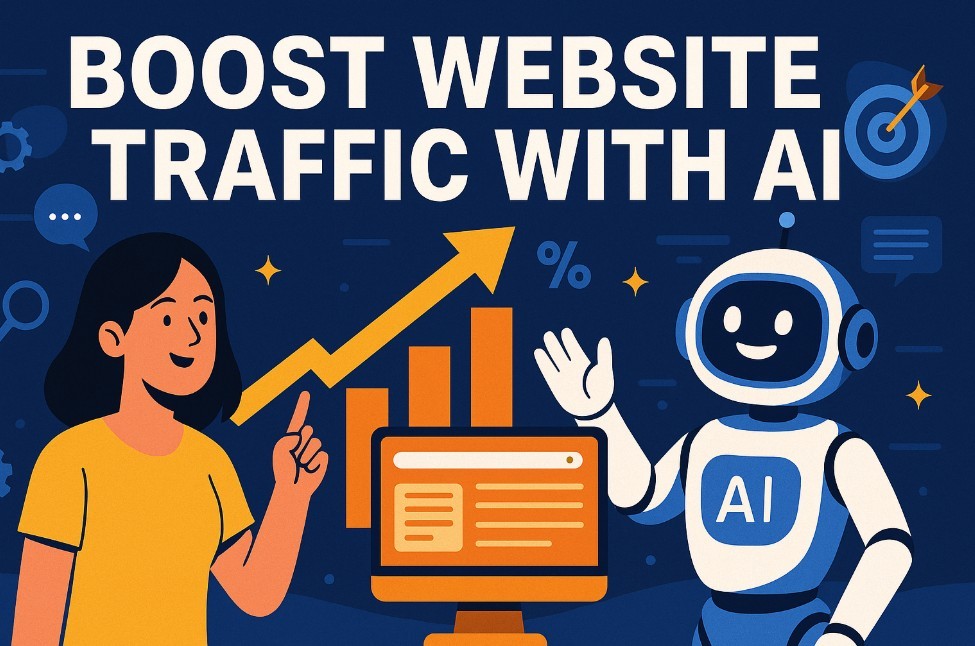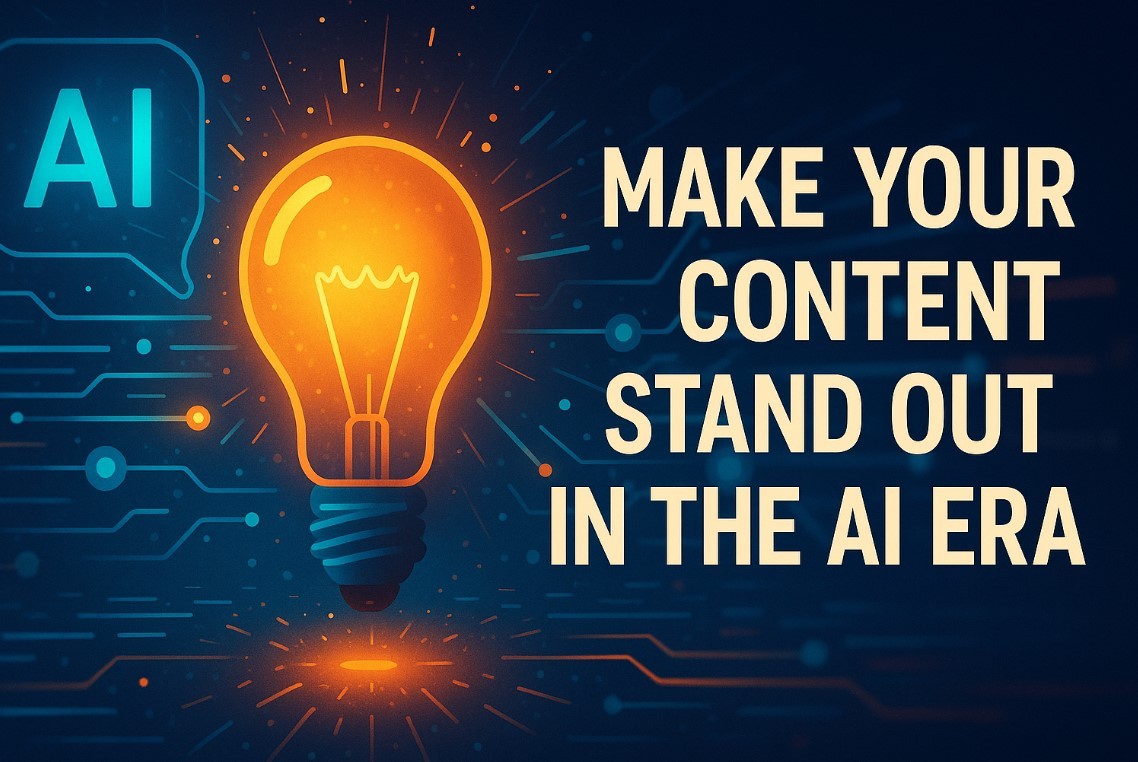How AI Is Rewriting the Rules of Web Traffic - and What You Can Do About It
 Top 20 Most Visited AI Tools in 2025: Monthly Traffic Rankings (Updated List) Top 20 Most Visited AI Tools in 2025: Monthly Traffic Rankings (Updated List) |
 Top 10 Best Free AI Tools for Musicians in 2025 Top 10 Best Free AI Tools for Musicians in 2025 |
AI is not just another tech trend—it’s fundamentally changing how people find, interact with, and engage with content online. If your website’s traffic patterns seem off lately, you’re not imagining it. AI-generated answers are altering the flow of traffic across the web, and unless you’re measuring it, you’re likely underestimating its impact.
This article explains what AI is doing to your traffic right now, why you might not see it in your analytics, and how to adapt before the gap widens.
Read more: How to Make Content Stand Out in the Age of AI: SEO + Strategy Guide
 |
| How AI is Changing Web Traffic |
AI Tools Are Becoming the New Gatekeepers
Search used to begin and end with Google. But now, people are asking ChatGPT, Gemini, Claude, and Perplexity for answers—and often, those answers come without any need to click.
Here’s what’s happening:
-
When an AI tool answers a user’s question completely, they may never visit your site.
-
If the AI includes a mention of your brand but no link, you may miss a traffic opportunity.
-
When a link is included, the visit might not show up in your analytics the way you'd expect.
This is not just a minor shift. It’s a fundamental change in how users arrive—or don’t arrive—on your website.
The Analytics Blind Spot: AI-Driven Visits Disguised as Direct Traffic
Most generative AI tools don’t act like browsers. When users follow a link from AI-generated content, it may appear in your analytics as direct traffic, especially if no referral information is passed through.
Here’s how leading AI platforms currently handle referral data:
| AI Platform | Referral Data Sent? | Analytics Classification |
|---|---|---|
| ChatGPT (citations) | Yes | Referral (chat.openai.com) |
| ChatGPT (chat answers) | No | Direct |
| Gemini | Sometimes | Referral, Organic, or Direct |
| Perplexity | Yes | Referral (perplexity.ai) |
| Claude | Yes | Referral (claude.ai) |
Referral data behavior varies depending on whether the AI tool is used on a mobile app, browser, or embedded widget. That makes measuring traffic even more complicated.
For example, our tests with Google Gemini showed that:
-
Queries on mobile browsers were categorized as organic search
-
Queries via the Gemini app showed up as direct traffic
-
Desktop usage was recorded as referral traffic
These inconsistencies make it difficult to get a clear picture of AI’s impact unless you segment and track carefully.
 |
| Explain how AI tools change web traffic behavior |
Will AI Help or Hurt Your Website Traffic?
The answer depends on your business model and how well you’re positioned within AI-generated content.
If you rely on pageviews for revenue, such as a news site or content publisher, AI can harm you. When answers are delivered without a visit to your site, you lose pageviews, ad revenue, and user engagement.
If you sell products or services, AI can be a powerful lead generator. For example, if someone asks, “Where can I buy a waterproof hiking jacket?” and the AI links to your product page, you benefit. But if your product isn’t mentioned or linked—even if you sell exactly what the user is looking for—you miss out entirely.
The key is visibility within the AI ecosystem.
How to Optimize Your Site for AI Traffic
Search engine optimization (SEO) is no longer enough. You also need to optimize for visibility in AI tools. Think of it as AI Engine Optimization (AEO).
Here’s how to start:
1. Track AI Traffic Separately
Most analytics platforms lump AI traffic into “direct” or “referral.” To get clarity:
-
Create a custom channel in Google Analytics or GA4 labeled "AI Referrals"
-
Include known AI domains like
chat.openai.com,perplexity.ai,gemini.google.com, andclaude.ai
2. Analyze Behavioral Metrics
Compare AI-driven visitors to those from traditional sources. Look at:
-
Conversion rates
-
Time on site
-
Bounce rates
-
New vs. returning users
In many cases, AI visitors show stronger buying intent and higher average order value.
3. Audit Your Presence in AI Tools
Use tools or manual prompts to ask AI systems how they describe your brand or products. Search queries like:
-
“What does [Your Brand] sell?”
-
“Best [product type] for [audience]”
If your site doesn’t show up or is poorly represented, that’s a visibility gap you need to close.
Why This Matters: A Digital Shift You Can’t Ignore
We’ve seen this before.
When search engines first appeared in the 1990s, businesses that embraced SEO surged ahead. Others waited—and many never caught up.
AI is now causing a similar disruption.
If your business isn't tracking or optimizing for AI-driven traffic, you’re falling behind companies that are already adjusting their strategies. AI isn’t just a threat. It’s a chance to gain an edge—if you understand it and act early.
What You Should Do Next
To stay ahead in the AI-driven digital landscape, take these steps:
-
Set up AI-specific tracking channels in your analytics
-
Identify which content gets cited or linked by AI tools
-
Review your brand visibility across ChatGPT, Gemini, and others
-
Optimize content for summarization—AI prefers clear, structured, authoritative pages
-
Monitor “direct” traffic closely—it may hide your AI referrals
-
Segment and analyze AI-driven users by geography, behavior, and conversion
Understanding how users find you through AI isn’t just helpful—it’s now essential.
Final Thought: The Future of Traffic Isn’t Search. It’s AI Discovery.
AI is not a trend you can ignore. It’s becoming the front door to your digital presence.
Rather than fearing lost search traffic, shift your mindset: treat AI platforms like new search engines. Measure their impact. Optimize your visibility. Track the value they drive.
The web is evolving fast—and the businesses that evolve with it will lead the next generation of digital success.
FAQs
1. Which types of websites are benefiting from AI-driven traffic?
Websites that sell products or offer local services often benefit most from AI referrals. For example, ecommerce stores that rank well for specific products, restaurants with structured business data, or service providers with strong brand presence tend to be recommended in AI-generated answers. Retailers who optimize for structured content and maintain strong branding are more likely to receive traffic from tools like ChatGPT and Perplexity.
2. How do AI tools change user behavior and web traffic flow?
AI assistants change the traditional click-and-search model. Instead of users browsing through multiple pages of search results, they now receive synthesized answers instantly. This reduces the number of organic clicks and shifts web traffic toward direct or referral channels, often without clear attribution. The behavior shift means websites must now compete to be mentioned or cited in AI answers, not just to rank in search.
3. What tools can help track and monitor AI-generated traffic?
Currently, most analytics tools don’t automatically identify AI-driven traffic. However, you can use:
-
Google Analytics 4 (GA4) with custom source/medium filters for domains like
chat.openai.com,perplexity.ai,gemini.google.com -
Server log analysis to detect non-standard traffic spikes
-
Waikay.io to see how AI tools interpret and summarize your brand
-
Manual testing by querying AI tools to observe their behavior
Tracking tools are still emerging, but setting up proper attribution is key to understanding how much traffic comes from AI.
4. What are best practices for getting cited in AI-generated content?
To increase your chances of being cited by AI tools:
-
Write clear, concise, fact-based content that answers questions directly.
-
Use structured data (Schema.org) to help AI understand your content.
-
Establish brand authority through high-quality backlinks and press mentions.
-
Focus on FAQ sections and definition-style content, which are more likely to be quoted.
-
Keep content up-to-date and trustworthy—AI tools often prioritize authoritative sources.
5. How can I improve my visibility in AI-generated search results?
Improving AI visibility requires a mix of SEO and AEO (AI Engine Optimization):
-
Make your brand and offerings easy to summarize.
-
Include keywords and phrases users would ask an AI assistant.
-
Publish content that answers specific user intents like “best [product] for [use case]”
-
Analyze AI-generated answers for your keywords and identify gaps.
-
Monitor how ChatGPT, Gemini, and Perplexity describe your business—and adjust content accordingly.
 Top 10 Best Free AI Chatbots in 2025: Secure, User-Friendly, and High-Performing Top 10 Best Free AI Chatbots in 2025: Secure, User-Friendly, and High-Performing Discover the top 10 best free AI chatbots in 2025 based on performance, security, and usability. Learn which chatbots offer the smartest features without compromising ... |
 Top 10 Best Free AI Tools for Excel to Work Smarter in 2025 Top 10 Best Free AI Tools for Excel to Work Smarter in 2025 This article reviews and ranks the top 10 best free AI tools for Excel in 2025, analyzing their features, pros, cons, and suitability for different ... |
 The Global State of AI in April, 2025: Tools, Models, and Policies Reshaping the Future The Global State of AI in April, 2025: Tools, Models, and Policies Reshaping the Future As of April 2025, artificial intelligence (AI) is evolving faster than ever—spanning powerful new models, ambitious policy shifts, and strategic global investments. |
 Top 10 Best Free AI Tools for College Students in 2025 Top 10 Best Free AI Tools for College Students in 2025 Choosing the right AI tools can make or break your college experience. |



























